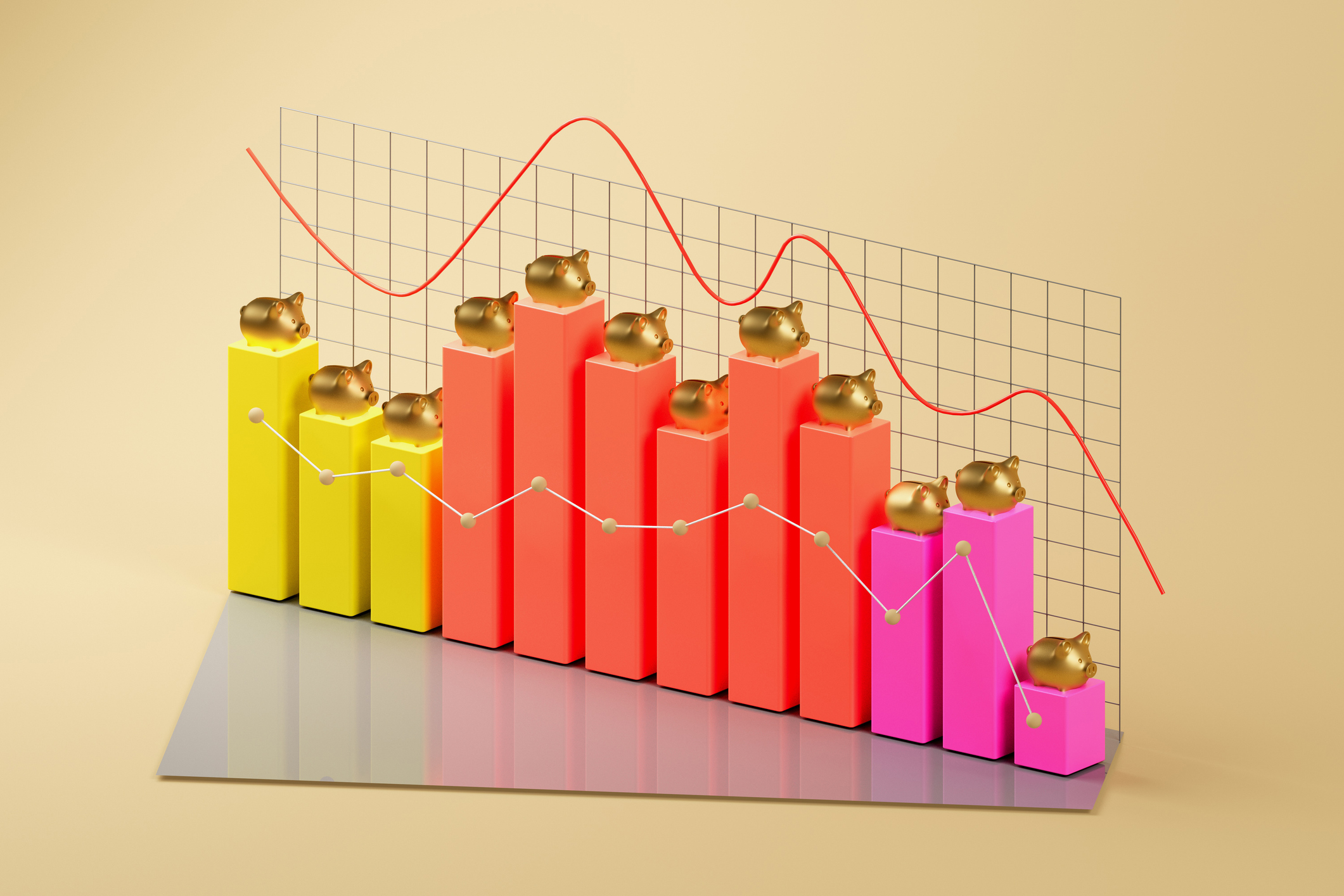How to find the best stocks and shares ISA
With so much choice it can be hard to work out which stocks and shares ISA is right for you. We explain how to compare providers.


Almost one in five (17%) UK adults have ‘never heard’ of a stocks and shares ISA. Of those who have, a quarter (25%) say they don’t know anything about the investment product, research from The Investment Association and Opinium found.
There is a stark difference between those already holding investment products and the wider UK population – just 2% of investors say they’ve ‘never heard’ of a stocks and shares ISA.
But even those who know a bit about stocks and shares ISAs can have trouble working out how to find the best type for their circumstances.
MoneyWeek
Subscribe to MoneyWeek today and get your first six magazine issues absolutely FREE

Sign up to Money Morning
Don't miss the latest investment and personal finances news, market analysis, plus money-saving tips with our free twice-daily newsletter
Don't miss the latest investment and personal finances news, market analysis, plus money-saving tips with our free twice-daily newsletter
In this guide we’ll explain everything you need to find the right stocks and shares ISA for you.
What is a stocks and shares ISA?
A stocks and shares ISA allows savers to invest in shares, funds, investment trusts and bonds with no tax on any gains or income from assets held in the account.
Everyone over the age of 18 who is a UK resident for tax purposes can open a stocks and shares ISA and invest up to £20,000 each tax year (6 April to 5 April) in it – as long as you don’t use all of your ISA allowance elsewhere (for example by saving in a cash ISA).
Who is a stocks and shares ISA for?
To find the best stocks and shares ISA for you it’s important to think about your financial goals and how long you are investing for.
Alice Haine, personal finance analyst at Bestinvest, says: “Stocks and shares ISAs are best for those with a time horizon of five years or more.
“This is because financial markets, especially equities, can be volatile over short-term time periods but have historically delivered much higher real returns – that is returns that beat the effect of inflation – than cash over the long term.”
A stocks and shares ISA could be worth investing in for a goal like a house deposit, for example, if you’re not looking to buy within the next five years or so.
Because five years is a fairly short time horizon, you may want to invest more in less risky assets, like bonds. The potential returns could be less than with equities but the risks of losing money are also lower.
Alternatively, stocks and shares ISAs are good for a long-term goal like investing for retirement. If this is still decades away, you can afford to take more risk with your money by investing more of it in equities – the risk of loss is higher than bonds, but the potential returns are also higher over the longer term.
For example, according to analysis by Darrow Wealth Management, between 1997 and 2024, the S&P 500 returned 9.7% a year on an average. The US Aggregate Bond index returned 4.1%. Both reflect total returns, which includes dividend income.
As you get closer to the date you want to retire, you may want to reduce the amount your stocks and shares ISA is invested in equities and invest more in lower risk assets, like bonds.
How to find the best stocks and shares ISA
Once you’ve decided on your investment goal and time horizon, you can start looking at whether you want to do the investment picking for your stocks and shares ISA yourself or get a fund manager to do it for you.
Ready-made portfolios vs DIY investing
DIY investors can choose their own investments, spending time doing research and selecting assets that match their attitude to risk and monitoring the performance themselves. You'll be able to build your own portfolio, typically choosing from individual shares, funds, bonds, ETFs, and investment trusts.
AJ Bell, Hargreaves Lansdown, and Bestinvest are some examples of DIY investment platforms where you can build your own stocks and shares ISA.
Or you can choose to invest in a fully managed portfolio, sometimes referred to as a ‘ready-made portfolio’.
In these off-the-peg investment portfolios, a portfolio manager will build a diverse portfolio of assets, typically tailored to different levels of risk and then periodically adjust and rebalance the mix. So you could choose from lower risk (often called something like ‘cautious’) to medium risk (‘balanced’) or higher risk (‘adventurous’).
Nutmeg, Wealthify and Moneyfarm are examples of investment platforms that will allow you to invest in a ready-made stock and shares ISA portfolio. They are sometimes called ‘robo-advisers’ because they automate parts of the investment process.
Many investment platforms offer both DIY and ready-made options. Which one is best for you depends on how much time and effort you want to put into managing your stocks and shares ISA. If you want more control, DIY could be for you. If you’re happy to just ‘invest and go’, ready-made might be better for you.
Compare ISA providers
We look at the fees and charges of some of the most popular DIY and managed stocks and shares ISAs platforms.
Stocks and shares ISA provider | DIY or managed? | Fees and charges |
|---|---|---|
Trading 212 | DIY | none |
AJ Bell | DIY | 0.25% per year |
Interactive Investor | DIY | £4.99 per month |
Hargreaves Lansdown | DIY | 0.45% per year |
Wealthify | Managed | 0.6% per year |
Moneyfarm | Managed | 0.45%-0.75% per year |
Nutmeg | Managed | 0.45%-0.75% per year |
Figures correct as of 15 May 2025.
What’s the minimum amount I can invest in a stocks and shares ISA?
Most stocks and shares ISAs have minimum deposit amounts to open them, but some are fairly low.
Bestinvest’s stocks and shares ISA has a minimum initial deposit of £50, for example. You can open a stocks and shares ISA with Hargreaves Lansdown from £100 or with a direct debit from £25 per month. Fidelity, however, starts at £1,000.
People don’t have to deposit lump sums to be able to invest in an ISA, they can make regular contributions either on an ad hoc basis or through regular deposits – such as on a monthly or quarterly basis.
A simple way to do this is to set up a regular savings scheme. Someone wanting to maximise their ISA allowance in full could set up a monthly direct debit of £1,666, which adds up to just under £20,000 over the course of 12 months.
We look at lump sum vs regular investing in a separate piece.
Bestinvest’s Haines says: “Investing on a monthly or quarterly basis takes advantage of pound-cost averaging.
“So rather than investing a lump sum at a single price point – such as during a supposed dip or when markets are soaring, and optimism is high – investors can buy smaller amounts at regular intervals no matter what the price is at the time. This cushions some of the effects of volatility in the short- and medium-term.”
How can I withdraw from a stocks and shares ISA?
To withdraw from a stocks and shares ISA, you need to sell out of your investments. This is easy to do online via your investment platform or using its app. But remember not all stocks and shares ISAs allow ‘flexible withdrawals’.
What are flexible withdrawals?
A flexible withdrawal means you can withdraw money from the ISA and then return that cash to your ISA without it impacting the current year’s £20,000 allowance.
“Flexible withdrawals'' can be returned within the same tax year and they can only go back into the same flexible ISA they were withdrawn from – not another ISA, even if that ISA is also flexible.
When an ISA isn’t flexible, any withdrawals you make won’t be added back to your annual allowance, so you won’t be able to return those withdrawals. Effectively, you lose that part of your allowance.
For example, if you put £10,000 into your ISA and then decide to withdraw £5,000 in the same tax year, your remaining ISA allowance will differ depending on whether your ISA is flexible or not.
If your ISA is not flexible, your annual allowance won’t reflect the withdrawal. Although you have only £5,000 in your ISA now, your remaining allowance is still £10,000 (rather than £15,000). Effectively, you have lost £5,000 of your annual allowance.
Are stocks and shares ISAs worth it?
Stocks and shares ISAs provide a number of benefits that make them seriously worth considering for investors, or savers who want to become investors.
They can offer a route to generate more than a cash ISA, although capital is at risk with investing. The average stocks & shares ISA fund experienced a growth of 11.86% between February 2024 and February 2025, according to Moneyfacts data. In contrast, the Moneyfacts average cash ISA rate returned 3.80% between the same dates.
There are also tax benefits. Filing a self-assessment tax return can be a cumbersome process, particularly if you need to add in investment income or capital gains – which can be quite laborious to calculate.
With income or gains on investments held within an ISA totally tax-free, there’s no need to declare it on a return, making the process that little bit simpler.
Those opting for an investment ISA don’t need to panic if they need more time to make an investment selection. They can simply store their money initially as cash and then make their investment choices later.
Bestinvest’s Haine says: “Building an investment portfolio from scratch can be challenging enough without adding a ticking clock to the process as the end of the tax year edges closer.
“No one should feel under pressure to make hasty investment decisions that they may later regret. So securing their ISA allowance initially with cash and investing it later ensures you don’t miss out.”
Remember investing puts your money at risk – you could get back less than you put in.
Get the latest financial news, insights and expert analysis from our award-winning MoneyWeek team, to help you understand what really matters when it comes to your finances.
Laura Miller is an experienced financial and business journalist. Formerly on staff at the Daily Telegraph, her freelance work now appears in the money pages of all the national newspapers. She endeavours to make money issues easy to understand for everyone, and to do justice to the people who regularly trust her to tell their stories. She lives by the sea in Aberystwyth. You can find her tweeting @thatlaurawrites
-
 The new 4% rule – how much should retirees really draw from their pension in 2026?
The new 4% rule – how much should retirees really draw from their pension in 2026?Brits retiring in 2026 could be withdrawing too much from their pension pots if they stick to an old rule about ‘safe’ limits – with the risk of running out of money in retirement
-
 Leaving it too late to gift inheritances costs some of Britain’s wealthiest families £3m each
Leaving it too late to gift inheritances costs some of Britain’s wealthiest families £3m eachEven average Brits are being landed with huge and unexpected inheritance tax bills because of a little understood rule around gifting, new figures show
